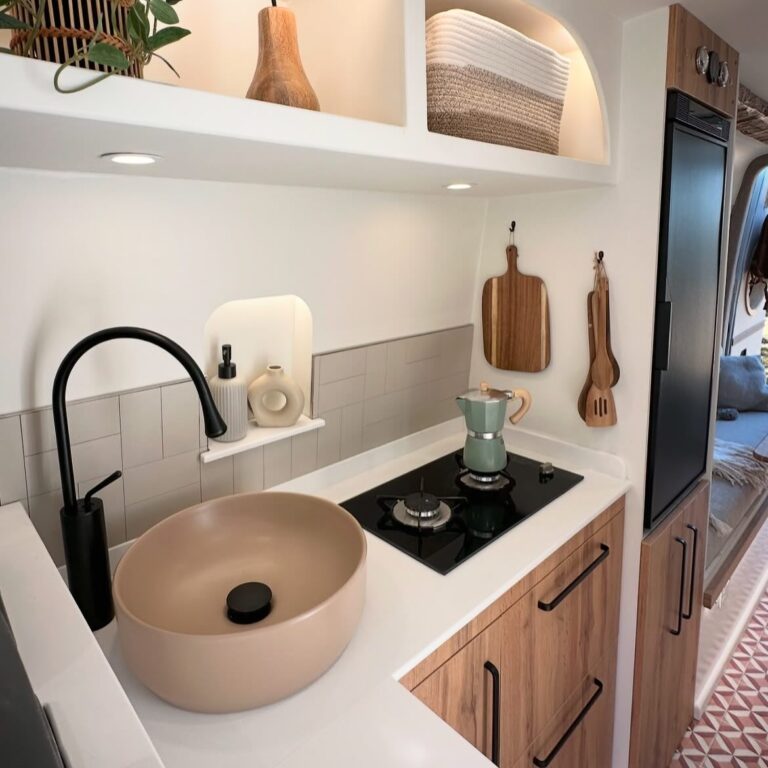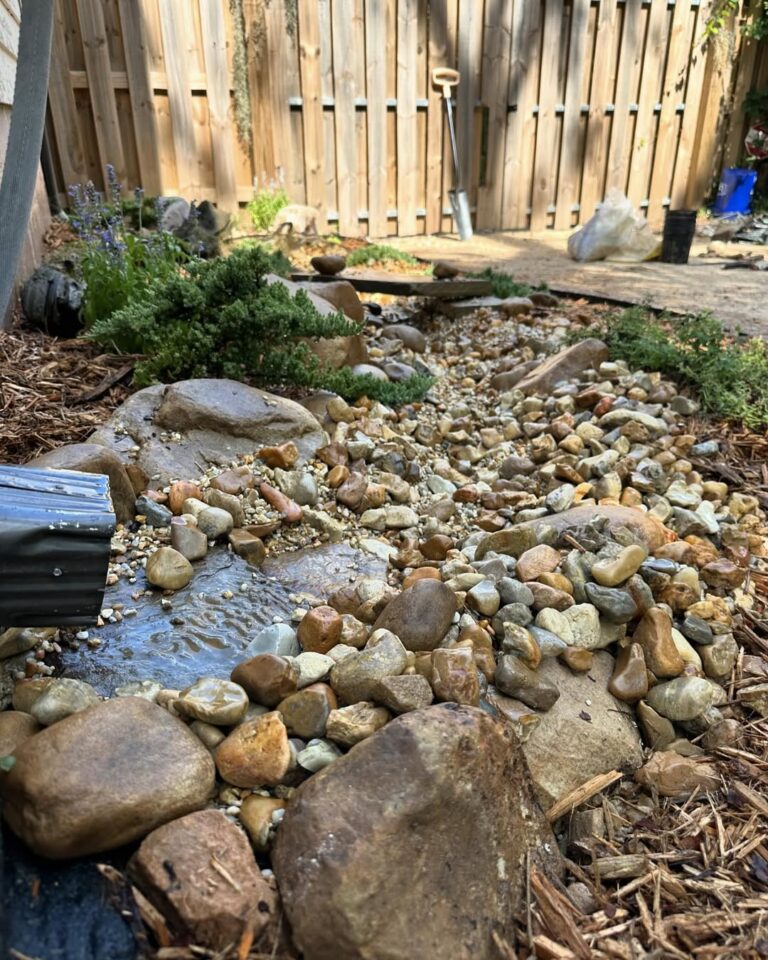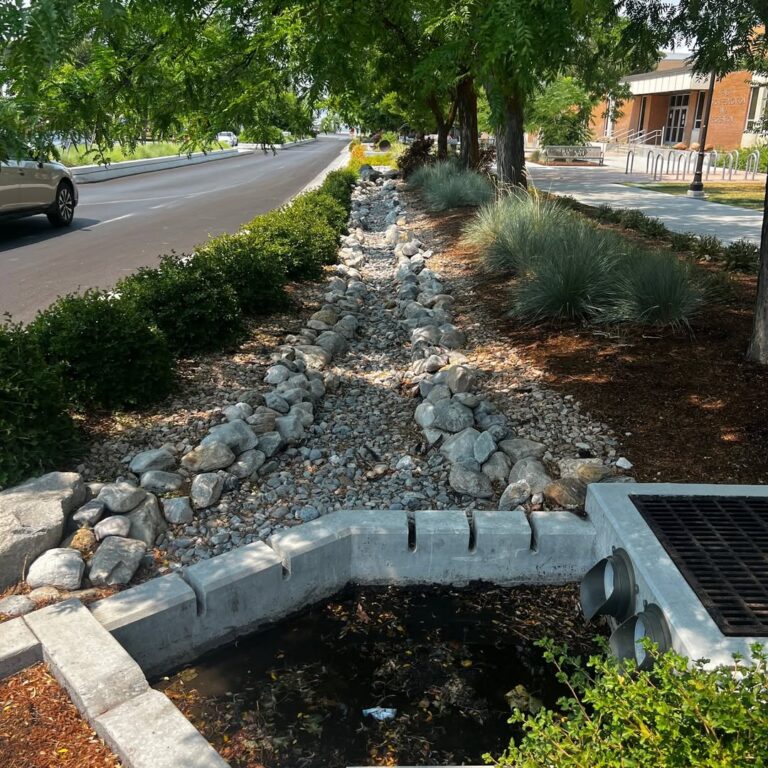13 French Drain Ideas to Improve Your Outdoor Living Space
When dealing with excess water and poor drainage around your yard, a French drain can be a game-changer. Not only does it help redirect water and prevent flooding, but it also improves the aesthetic of your outdoor spaces. Whether you’re looking to protect your home’s foundation or enhance the beauty of your backyard, these 13 French drain ideas will inspire you to make the most of this practical solution.
1. Traditional French Drain for Efficient Water Flow

A traditional French drain is one of the most effective ways to direct surface water away from areas like your foundation, garden, or patio. This classic design typically consists of a perforated pipe surrounded by gravel, allowing water to flow through the pipe and be carried away from your home.
The key benefit of a traditional French drain is its simplicity and efficiency. By installing it at a slight slope, the water naturally travels away from problem areas. It’s perfect for redirecting rainwater that may otherwise pool around your house or garden beds. To make it more visually appealing, you can bury the drain under a layer of mulch, rocks, or decorative stone.
If you’re worried about appearance, try incorporating natural elements like greenery or plants to cover the drain. Adding a flower bed or a decorative rock garden on top can make your French drain blend seamlessly into your yard while keeping it functional.
2. French Drain with Dry Well for Maximum Drainage
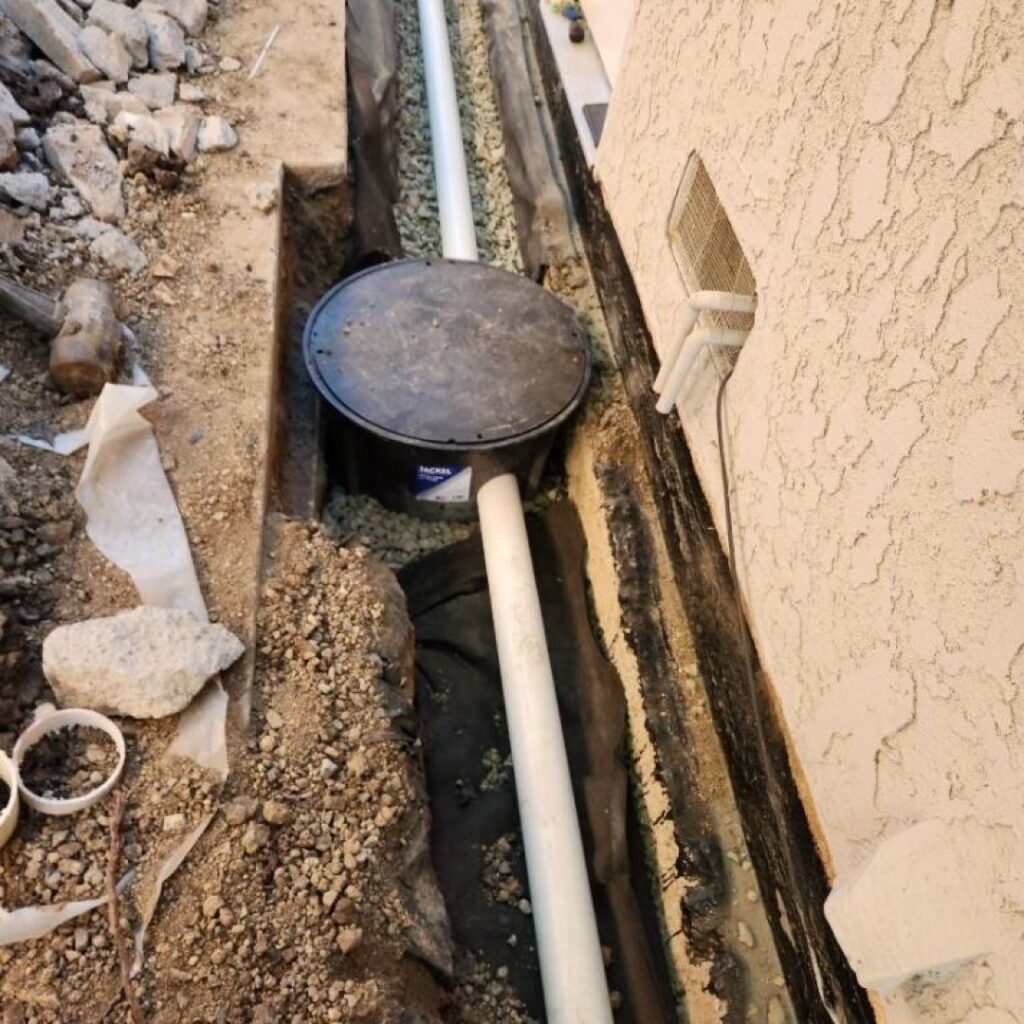
If you’re facing an area with severe water pooling, a French drain with a dry well is a perfect solution. A dry well is essentially a large, underground container that allows water to seep into the ground gradually, reducing the risk of flooding.
This design works especially well in areas with high water tables or compacted soil. The water flows through the perforated pipe and is then directed into the dry well, where it can slowly dissipate into the surrounding soil. To prevent clogging, you’ll want to make sure the well is filled with gravel or similar material that promotes proper drainage.
What makes this French drain system unique is its ability to handle large volumes of water over an extended period. You can enhance the visual appeal by covering the dry well with grass or a small garden, ensuring it doesn’t disrupt your landscape’s aesthetic.
3. Surface French Drain for Shallow Areas
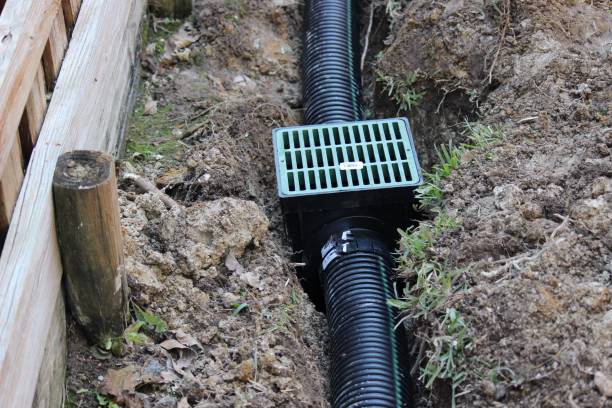
For areas where the water problem is less severe or the soil is relatively shallow, a surface French drain may be just what you need. This type of drain sits above the ground, often disguised as part of your landscaping design.
A surface French drain involves digging a shallow trench and filling it with gravel and a perforated pipe. The pipe is usually covered with an attractive material like river rock or decorative stones, so it doesn’t stand out. Water flows through the gravel, into the pipe, and away from your property.
The beauty of a surface French drain is its flexibility. You can install it along walkways, patios, or near your flower beds without disturbing much of the surrounding landscaping. If you’re looking for a way to keep your yard looking neat while also managing water runoff, this type of French drain is a great option.
4. Rain Garden French Drain to Enhance Outdoor Aesthetics
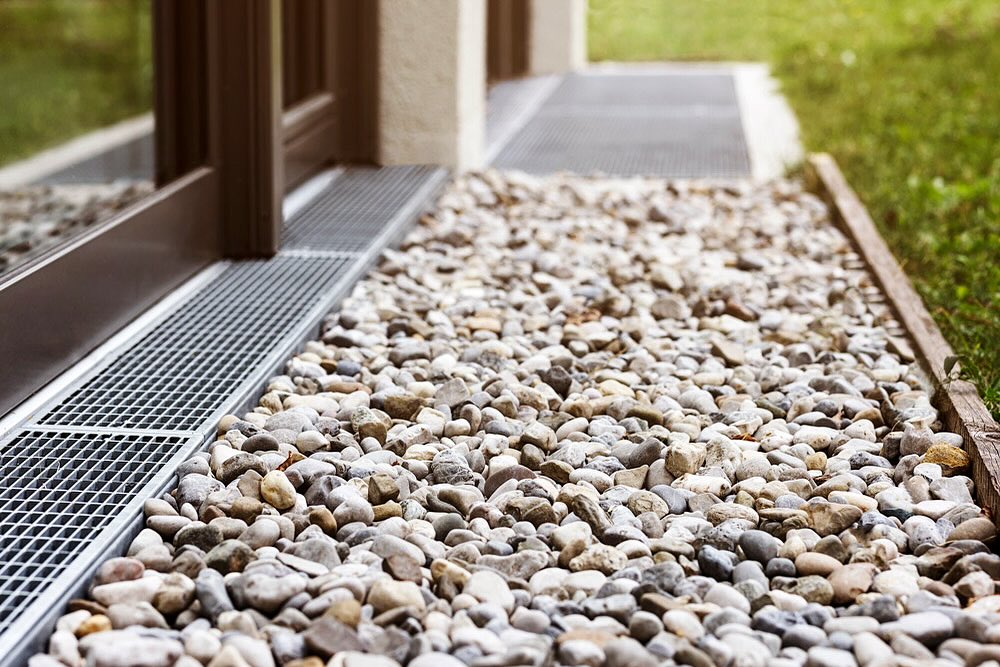
A rain garden is a wonderful way to incorporate both a French drain and a beautiful garden feature. By combining a French drain with a well-placed rain garden, you can create an area where water collects naturally, promoting better drainage while adding curb appeal.
In this setup, the French drain directs rainwater to a low point in your yard, which is filled with native plants and soil that naturally absorb excess moisture. The plants selected for a rain garden are typically drought-tolerant and thrive in wet conditions, making them ideal for absorbing the water that would otherwise pool in low areas.
This type of drain is particularly effective for landscaping near patios or back porches, where water runoff can be problematic. Not only does it solve drainage issues, but it also creates a beautiful, eco-friendly space that supports local wildlife.
5. French Drain with a Decorative Grate
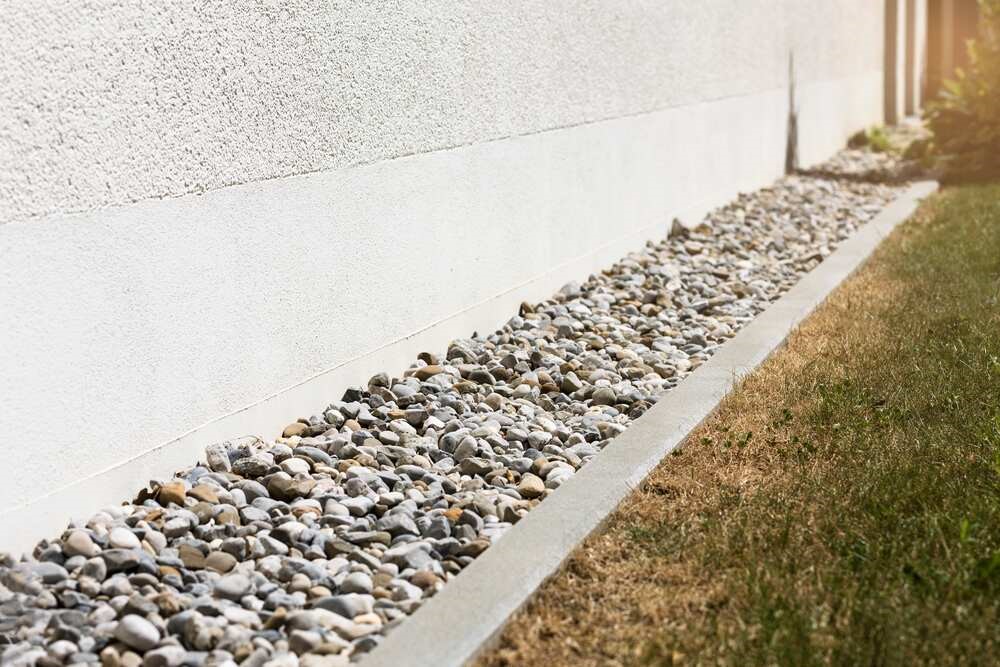
If you’re concerned about the aesthetics of a traditional French drain, consider installing one with a decorative grate. This option allows the drain to blend seamlessly with your landscaping while still providing effective water management.
The decorative grate acts as a cover for the drain, allowing water to flow through while giving your yard a sophisticated, finished look. You can choose from a variety of designs, from modern and sleek to more rustic options that complement your outdoor living space.
This solution is perfect for areas where you want both function and style. Whether you’re installing it near a patio, garden, or driveway, the decorative grate adds an extra layer of flair while keeping your French drain system discreet.
6. French Drain with a Sump Pump for Challenging Drainage Areas
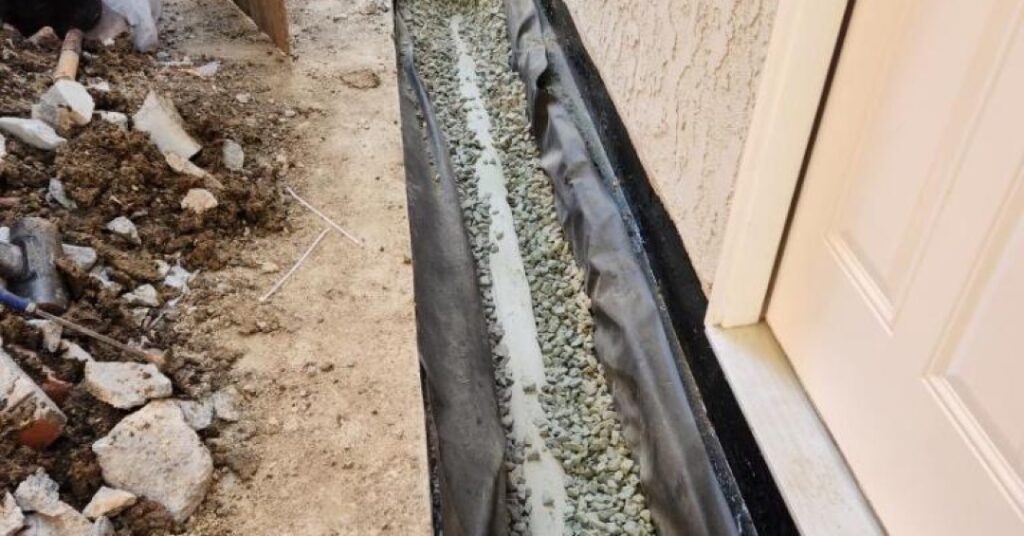
In some cases, natural gravity drainage isn’t enough to solve water issues, especially if you’re dealing with a slope or basement water problems. Installing a French drain with a sump pump ensures that water is actively pushed out of the problem area.
The sump pump, located at the lowest point of the French drain system, pumps excess water out of your yard and away from your home. This option is ideal for areas where water tends to pool or where you experience periodic flooding. A sump pump can be installed either in combination with a dry well or directed to another location on your property where water runoff is not an issue.
The French drain with a sump pump is a bit more advanced than traditional systems, but it offers peace of mind for homeowners who need a robust solution to water management.
7. French Drain Under Walkways or Patios

If you have a walkway or patio that frequently collects water, installing a French drain underneath is an excellent way to prevent flooding and pooling. This type of drain works by directing water under the surface and away from the patio area, keeping your outdoor spaces dry and functional.
For walkways, the French drain can be installed beneath the gravel or stone, ensuring the surface remains even and free from drainage issues. For patios, a French drain can be installed beneath the pavers, making it nearly invisible while still doing the job of managing water runoff.
This solution works particularly well in areas where you’ve invested in high-quality patio furniture or outdoor decor, helping to protect your investment and keep the outdoor space comfortable for guests and family.
8. French Drain with Decorative Stones or River Rock

For homeowners who want to maintain the functionality of their French drain while enhancing the visual appeal of their landscaping, consider using decorative stones or river rock as part of the system. This design integrates the drain into the yard seamlessly, allowing the flow of water while blending with the surrounding landscape.
The gravel surrounding the drain can be replaced with decorative stones like river rock, which not only directs water away but also provides an elegant and natural look. These stones can be carefully selected to match your garden’s colors, creating a subtle and harmonious effect. It’s an excellent choice for areas near gardens, patios, or walkways, where you want to keep the drain discreet yet effective.
This design is ideal if you have a more modern backyard and want a clean, minimalist aesthetic. Decorative stones or river rock also promote better drainage by preventing the gravel from compacting, allowing water to flow freely through the system.
9. Trench French Drain for Large Areas
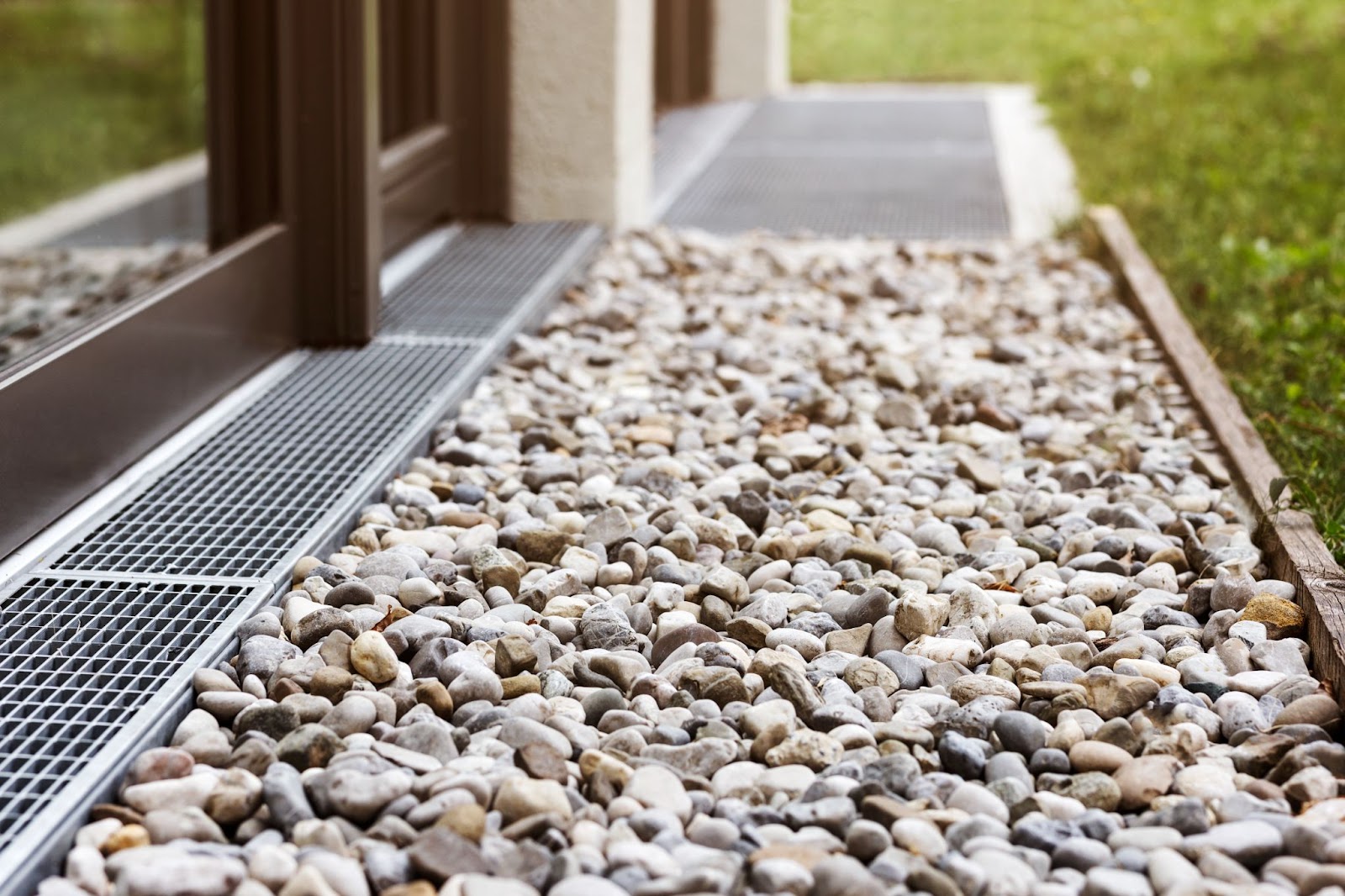
For larger properties or areas where the water problem is widespread, a trench French drain offers a comprehensive solution. Unlike smaller, more compact drain systems, a trench French drain involves digging a long, deep trench that can span across your yard, effectively directing water over a larger area.
The trench is typically lined with a perforated pipe, surrounded by gravel, and covered with soil. It is particularly useful when you need to direct water away from significant areas like a large lawn or expansive garden bed. You can even run it parallel to your home’s foundation to prevent any water seepage that could lead to structural damage.
Installing a trench French drain does require a bit more excavation work, but it’s a great investment for homeowners who want to tackle large-scale water drainage issues. The added benefit is that you can incorporate it into your landscaping design, allowing for easy access when maintenance is needed.
10. French Drain Behind Retaining Walls
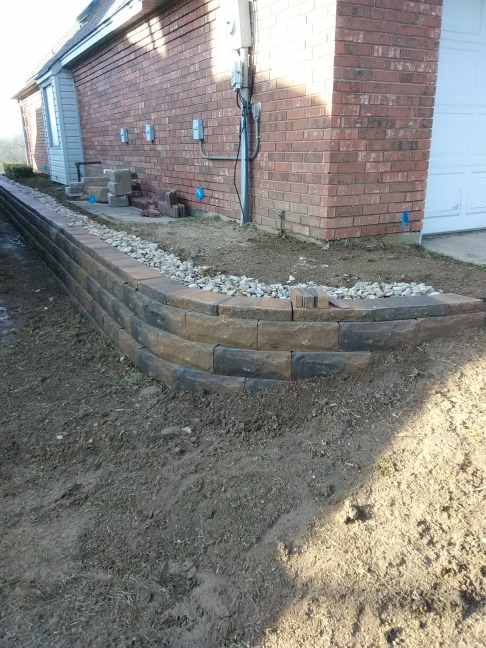
A French drain behind retaining walls is a practical solution for areas with elevation changes or steep slopes. Retaining walls are often used to prevent soil erosion and create level spaces in sloped yards, but they can trap water behind them, causing potential damage to the structure. Installing a French drain behind the wall prevents water from building up and ensures that your retaining wall stays stable over time.
This setup typically involves placing a perforated pipe at the base of the wall, with gravel or drainage rock surrounding the pipe. The water then flows through the pipe and is diverted away from the wall, reducing the pressure and preventing damage. You can cover the French drain with additional soil or plants to maintain the aesthetic of the retaining wall.
This French drain option is especially beneficial if you live in a hilly area or have a terraced garden. It protects both your landscaping and your property from the potential threats of water damage.
11. French Drain for Pool Areas

For homeowners with swimming pools, installing a French drain around the pool is a smart way to prevent water from collecting in the surrounding area. Pools can create significant water runoff, particularly during heavy rain or when the pool is in use. Without proper drainage, water may pool around the pool, leading to slippery surfaces or even erosion.
By placing a French drain around the pool’s perimeter, you can direct this water away from the pool area and keep the surface dry and safe. It’s also beneficial for keeping the pool deck and surrounding landscaping in good condition. The drain can be hidden beneath the deck, or it can be lined with decorative stones for a more seamless appearance.
Additionally, if your pool area has a concrete surface, you can install a French drain beneath it to avoid flooding issues during heavy rain. This is a practical, easy-to-maintain solution that will keep your pool area looking pristine while ensuring the safety of swimmers.
12. French Drain with Permeable Pavers
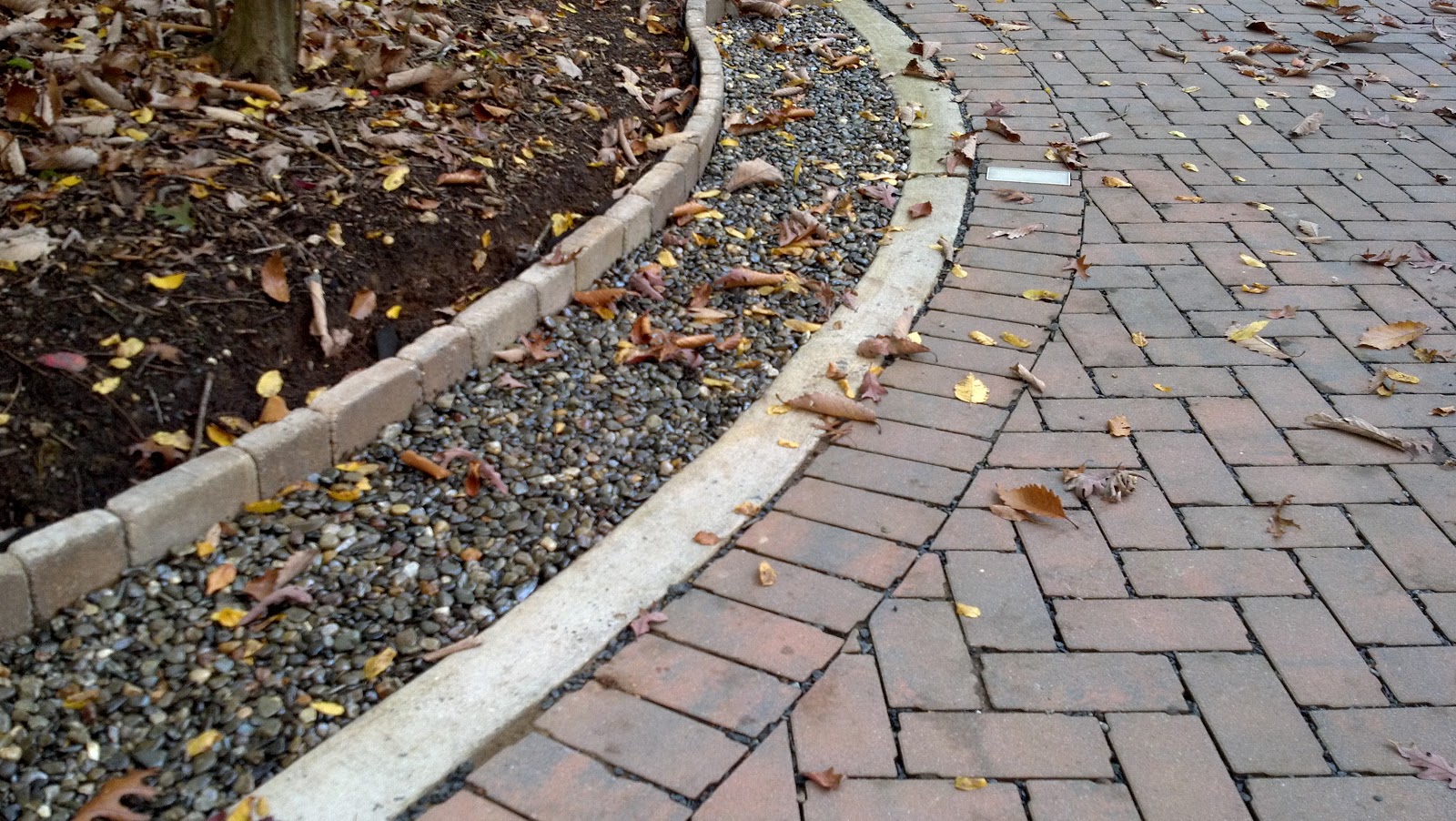
Permeable pavers are an innovative way to combine drainage and style in your outdoor spaces. If you’re looking for a way to control water runoff while still incorporating a beautiful, solid surface, consider installing permeable pavers over your French drain system. These pavers allow water to flow through them, reducing runoff and preventing pooling around walkways, patios, or driveways.
The French drain system beneath the permeable pavers helps direct excess water away from the surface, making it a sustainable and eco-friendly solution. This type of French drain works particularly well for areas with heavy foot traffic or driveways where you want to reduce the amount of water that accumulates.
By choosing permeable pavers, you not only enhance the functionality of your French drain but also create a stylish and environmentally conscious feature for your outdoor living space. It’s an excellent choice for those who want a balance between performance and aesthetics.
13. Smart French Drain with Drainage System Monitoring

For those looking for the most advanced option in water management, a smart French drain with a drainage system monitoring feature might be the ideal solution. This modern approach involves using technology to track the flow of water in your French drain system, alerting you to any blockages, leaks, or potential problems.
A smart French drain system often incorporates sensors and Wi-Fi connectivity, allowing you to monitor its performance remotely. This system can be integrated into your home’s smart irrigation or home automation system, giving you full control over the drainage process. With alerts sent directly to your phone or computer, you can take quick action if there’s an issue, ensuring your outdoor space remains dry and free of standing water.
Though more expensive, a smart French drain system offers peace of mind and ensures your drainage system is always working at its best. If you’re keen on having the latest technology in your backyard and want to maximize efficiency, this option is worth considering.
Conclusion
A French drain is a simple yet highly effective solution for managing water around your home and garden. From traditional methods to advanced, high-tech designs, the possibilities for installing French drains are endless. Whether you’re trying to protect your foundation from water damage, enhance your landscaping, or keep your patio dry, there’s a French drain idea to fit every need.
As you consider which French drain idea works best for your property, think about both the practical and aesthetic aspects of the design. A well-placed French drain not only resolves drainage issues but also complements your outdoor living space. By incorporating creative solutions like decorative stones, rain gardens, or permeable pavers, you can blend functionality with beauty.
No matter which approach you choose, French drains are an investment in the longevity and appeal of your outdoor environment, making it a space you can enjoy for years to come.

